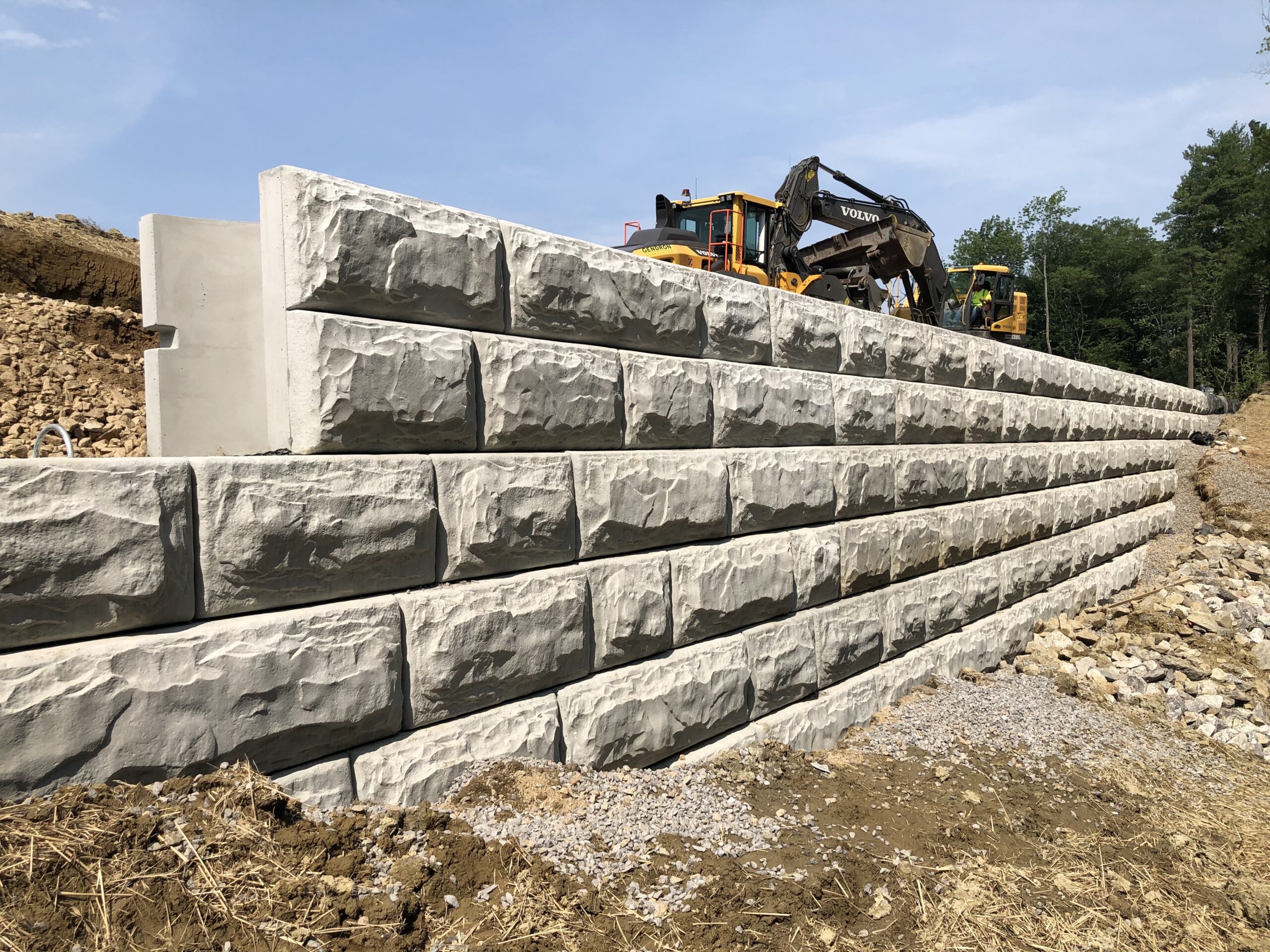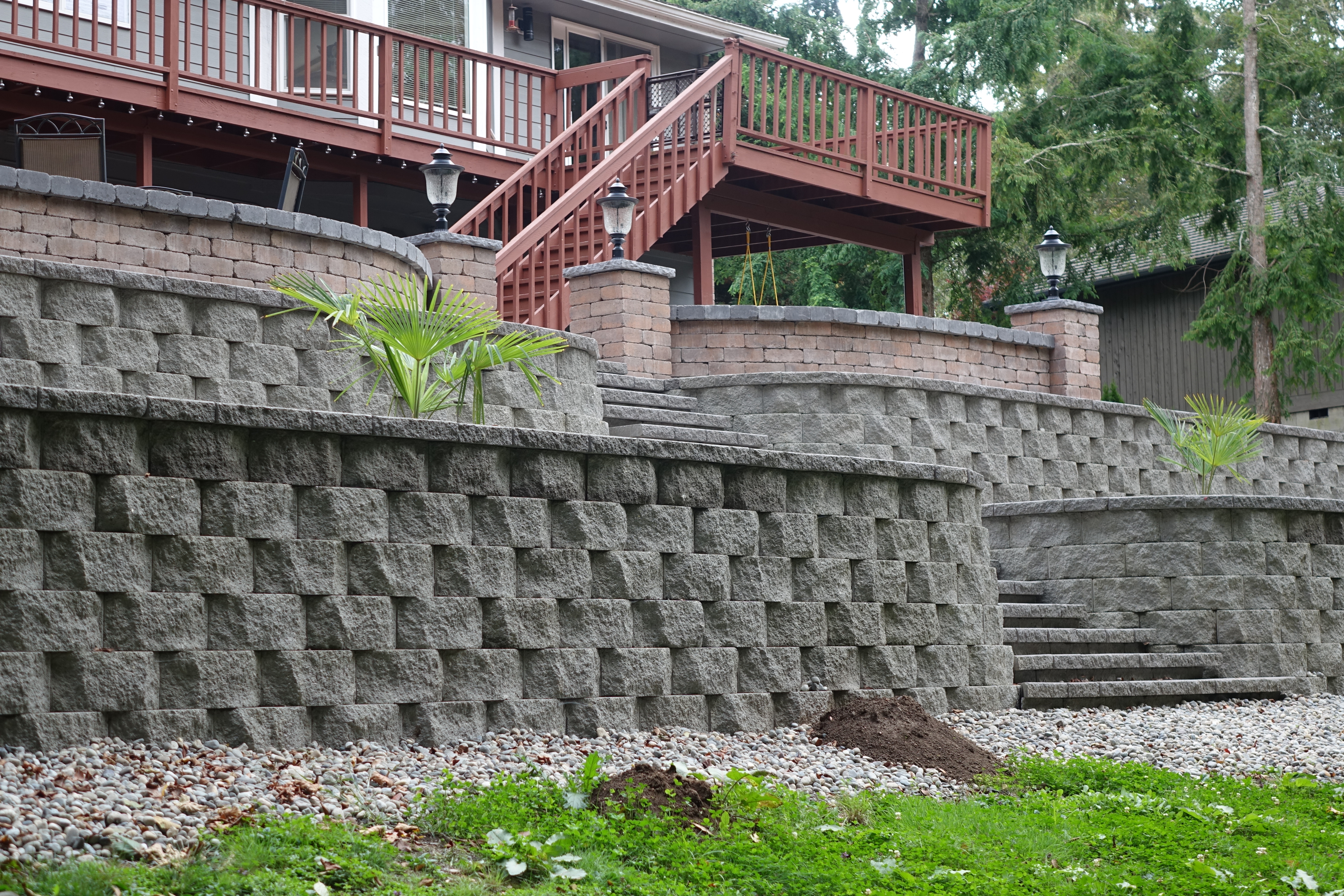Why OKC Precision Retaining Walls are vital for stabilizing uneven land
Why OKC Precision Retaining Walls are vital for stabilizing uneven land
Blog Article
The Crucial Guide to Comprehending the Capability of Retaining Walls
When it comes to taking care of sloped landscapes, retaining walls are vital. What kinds of retaining walls are available, and exactly how do you pick the ideal materials?
What Are Retaining Walls and Their Function?
Retaining walls are important frameworks designed to keep back soil and avoid disintegration, particularly on sloped landscapes. They give stability to your property, guaranteeing that soil continues to be in position and preventing potential landslides. When you think concerning a maintaining wall surface, consider its duty in handling water overflow, which can erode soil with time. Without these walls, you could deal with costly damages to your landscape and structure.
Additionally, retaining walls can create functional areas in your yard. By leveling out a sloped area, you can obtain a lot more functional exterior area for gardening, outdoor patios, or play locations. The style and products you select can boost your residential or commercial property's looks, making it aesthetically appealing.
Inevitably, understanding the objective of retaining walls aids you value their significance in landscape management (OKC Precision Retaining Walls). They not just safeguard your building yet also add to the general appeal and functionality of your outside space
Sorts Of Retaining Walls: An Introduction
When it involves managing soil and water drainage in your landscape, knowing the different sorts of retaining walls can assist you make an educated selection for your residential or commercial property. Gravity walls count on their weight to keep back dirt, making them a sturdy alternative for smaller inclines. Cantilever walls, on the other hand, use a lever-like layout, which permits them to sustain extra substantial loads with less product. For more facility terrains, anchored walls provide extra stability by making use of wires secured into the ground. Lastly, there are modular block walls, which offer convenience and convenience of setup with interlocking blocks. Each type has its benefits and applications, so think about variables like dirt conditions, height requirements, and aesthetic preferences before making your decision. Comprehending these options will encourage you to boost your landscape successfully while preventing erosion and managing water drainage.
Key Materials Used in Retaining Wall Surface Building
To develop a durable and efficient retaining wall, selecting the ideal products is crucial. You'll find that concrete is a prominent choice due to its sturdiness and stamina. Precast concrete blocks deal versatility in style, while put concrete gives a seamless appearance. If you favor a more all-natural appearance, stone or brick can add aesthetic appeal and blend with the landscape.
Wood is another alternative, especially for smaller sized walls, but maintain in mind it might not last as long due to decay. Steel and gabion walls, which make use of cable mesh loaded with rocks, are likewise reliable for specific scenarios.

Design Considerations for Efficient Retaining Walls
Creating a reliable retaining wall entails cautious consideration of several key variables, as the wall must endure both upright and side forces. Evaluate the soil kind and its residential properties; cohesive dirts behave differently than granular ones. You'll likewise want to figure out the elevation of the wall, as taller walls need even more robust style remedies.
Following, consider water drainage. Appropriate drainage stops water build-up behind the wall surface, lowering stress and potential failure. Incorporate weep holes or drain pipelines for reliable water monitoring.
Additionally, assume about the materials you'll use. Various products, like concrete, rock, or lumber, deal varying staminas and aesthetic appeals.
Ultimately, don't ignore regional policies and codes. They commonly determine layout standards and building methods. By resolving these considerations, you can guarantee your retaining wall is not only useful yet likewise sturdy and safe.
Applications of Retaining Walls in Landscape Design and Building
Retaining walls offer an important duty in both landscape design and building and construction, as they assist manage modifications in altitude and avoid soil disintegration. In landscape design, you can use them to create beautiful terraced yards, allowing you to optimize your exterior room while adding aesthetic rate of interest. They additionally aid specify areas, such as pathways or flower beds, improving your landscape's total design.
In construction, retaining walls provide security to frameworks improved sloped land, ensuring security and longevity. They're frequently made use of in roadways and business properties to take care of planet movement and drain effectively. By avoiding dirt from shifting, retaining walls protect foundations and maintain the integrity of your building projects.
Whether you're wanting to enhance aesthetic appeal Get the facts or warranty architectural stability, retaining walls offer useful services that can substantially profit your landscape and building and construction endeavors. Accept their versatility to achieve both visual and practical objectives.
Upkeep Tips for Long-Lasting Retaining Walls
To keep your retaining walls in terrific form, routine assessments and timely repair services are important. You also need to ensure appropriate drainage options to prevent water buildup, which can weaken the framework. Taking care of plants around the walls will help keep their honesty and expand their life-span.

Normal Evaluations and Repairs
While you may assume your retaining wall surface can stand strong on its very own, routine inspections and timely fixings are vital for its long life. Look for any kind of moving in the dirt bordering the wall surface, as this can show much deeper issues. By being positive about assessments and repair work, you'll assure your retaining wall remains sturdy and functional for years to come.
Correct Drainage Solutions
Efficient drain is essential for maintaining the stability of your retaining wall surface, as water build-up can lead to substantial look at more info architectural concerns. To guarantee correct drain, set up weep holes at regular periods along the wall. By executing these solutions, you'll enhance the longevity and stability of your retaining wall surface, protecting it against potential damage created by water accumulation.
Vegetation Management Methods
Healthy and balanced plants can play a crucial duty in the durability of your retaining wall surface. To ensure its performance, you'll wish to handle the plant life around it meticulously. Start by selecting ingrained plants that aid stabilize the dirt without causing stress on the wall surface - OKC Precision Retaining Walls. On a regular basis check for invasive varieties that could threaten your wall's stability.
Maintain the greenery cut to avoid excess weight and preserve proper drainage. It's important to prevent overwatering, as excessive moisture can deteriorate the wall's foundation. In addition, take into consideration using compost to keep soil wetness while subduing weed growth. By executing these plant life monitoring approaches, you'll support your retaining wall surface's resilience and improve the surrounding landscape's elegance.
Common Problems and Solutions for Retaining Walls
When it comes to retaining walls, dirt disintegration and water drainage concerns can trigger significant frustrations. You require to guarantee your wall surface is correctly developed to stop disintegration and has a reliable water drainage system in area. Let's discover some usual problems and their options to maintain your retaining wall sturdy and practical.
Dirt Erosion Avoidance
Dirt erosion can be a substantial challenge for retaining walls, particularly if not properly resolved. When dirt deteriorates, it can weaken the wall surface's stability, bring about prospective failures. To stop this, you ought to consider planting plant life along the wall surface's base. Roots assist hold the dirt together, decreasing disintegration. Additionally, using erosion control coverings or floor coverings can offer prompt security while plants establish. You can likewise apply mulch to lessen surface overflow and secure the dirt. Regular maintenance, like inspecting for splits or signs of shifting, is important to catch problems early. By discover here taking these proactive actions, you can significantly boost the long life and efficiency of your retaining wall against soil disintegration.
Drain System Relevance
A reliable drainage system is crucial for the efficiency and long life of retaining walls. Without proper drain, water can gather behind the wall surface, developing extreme pressure that can result in structural failing. You could observe bulging or fracturing, which indicates the requirement for prompt attention. To stop these issues, take into consideration setting up weep openings, which enable water to run away, or a perforated drainpipe that reroutes water away from the wall. Routinely inspect for obstructions in your water drainage system, as particles can hinder its efficiency. Keeping appropriate drain not only secures your retaining wall however likewise assures the surrounding landscape remains stable. By staying aggressive, you can prevent costly repairs and lengthen the life of your retaining wall surface.
Regularly Asked Concerns
Exactly How Do Retaining Walls Impact Drain Equipments?
Retaining walls can significantly influence water drainage systems by redirecting water circulation. They avoid dirt erosion and take care of groundwater degrees, guaranteeing stability. If you're preparing construction, consider just how they'll engage with your drain layout for optimal outcomes.
Can Retaining Walls Be Mounted on Slopes?
Yes, you can install retaining walls on slopes. They help support the dirt and avoid disintegration. Just assure proper drainage and pick the ideal materials to handle the pressure from the dirt behind the wall.
What Is the Life expectancy of a Regular Retaining Wall Surface?
A normal retaining wall lasts around 20 to 50 years, relying on products, upkeep, and environmental problems. You need to routinely evaluate it to guarantee its durability and attend to any kind of problems promptly to stay clear of pricey repairs.
Are Permits Required for Building Retaining Walls?
Yes, you usually require authorizations for developing retaining walls. Inspect your local building regulations and policies to ensure compliance. It's essential to safeguard the ideal consents before starting your task to prevent prospective fines or problems.
Just How Do Retaining Walls Influence Home Value?
Retaining walls can positively impact your residential or commercial property value by enhancing aesthetic appeals, avoiding disintegration, and developing usable exterior space. OKC Precision Retaining Walls. They also show great land management, making your residential property a lot more attractive to prospective buyers in the market
Report this page